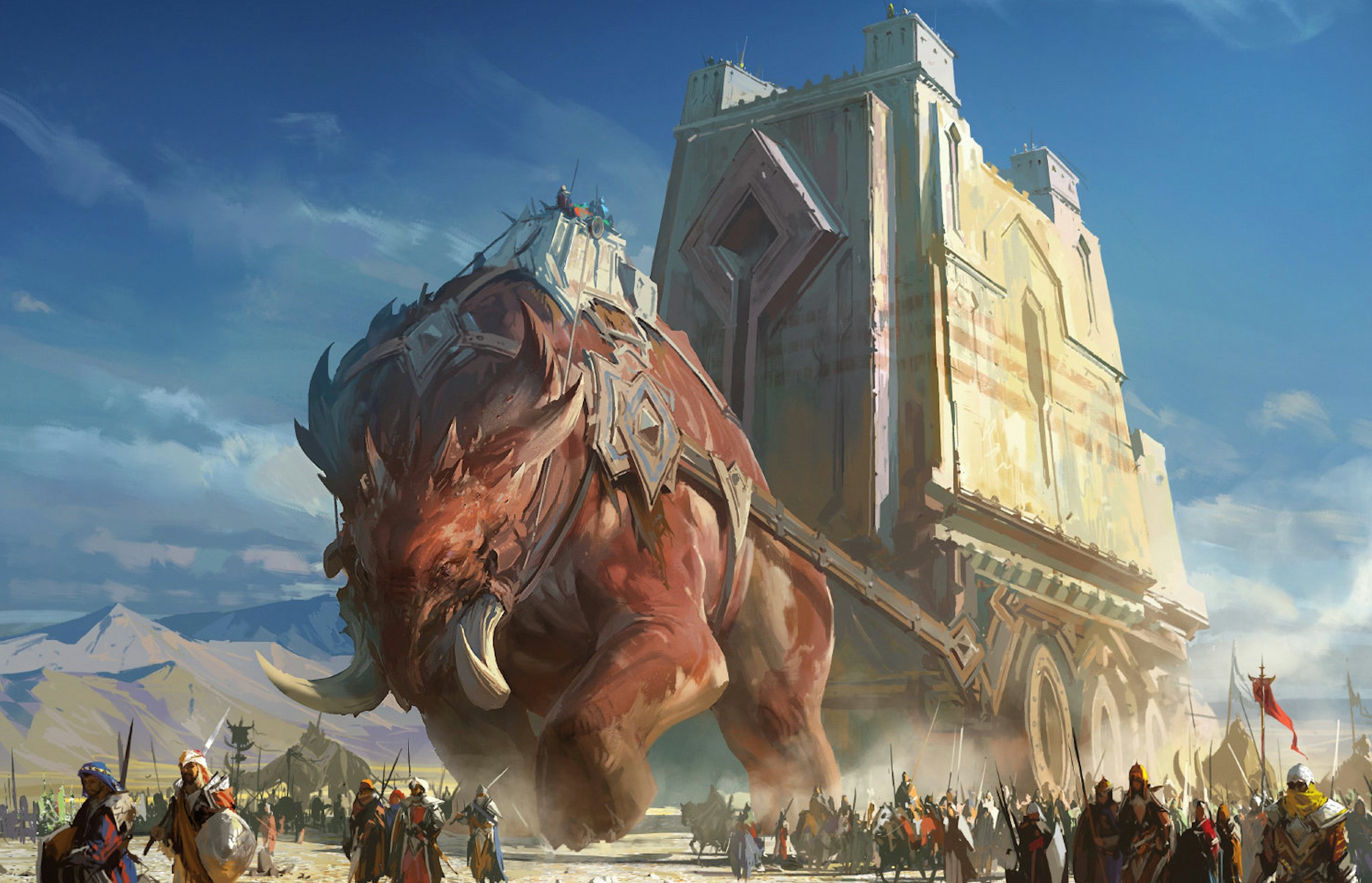
In 2014, Magic: The Gathering fans wanted one thing above almost anything else.
From its very inception in 1993, Magic has relied on five colors to define the game. You can play as a blue wizard and use deception and trickery to undermine your opponent's every move, or play as a black wizard and manipulate the very nature of mortality (or be a blue-black wizard and do both at once). But for over two decades, as Magic grew increasingly popular (and increasingly complicated), its publisher, Wizards of the Coast, resisted the urge to introduce a certain subset of color combinations — that is until Khans of Tarkir launched in the fall of 2014 and changed Magic the Gathering forever.
It happened almost by accident. Mark Rosewater, head designer for Magic: The Gathering, tells Inverse that Khans of Tarkir’s iconic three-color combinations were never the original plan. They weren’t even introduced until “four months into design.”
“The interesting thing about the wedges,” Rosewater says, “is that we backed into the wedges.”
Inverse spoke to Rosewater and his collaborator David Humpherys to unpack the origins of Khans of Tarkir, what they wish they did differently, and Magic: The Gathering’s plans to return to the set (and its wedges) in 2025.
What Are “Wedges” in Magic: The Gathering?
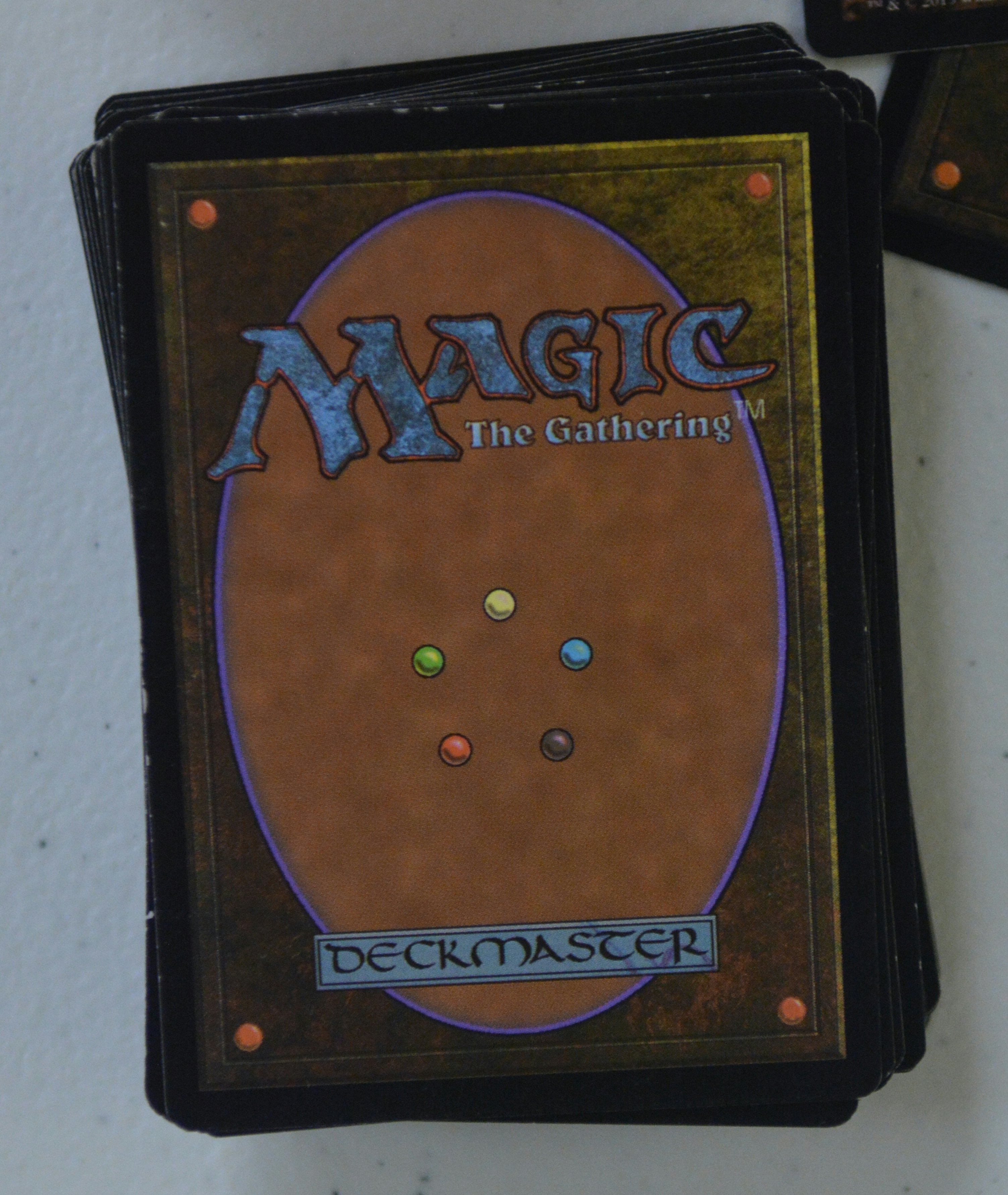
Wedges refers to five specific three-color combinations in Magic. If you look at the back of a magic card, you’ll see all five colors in a circle. Each color is placed next to the ones it traditionally works with best and opposite the ones it opposes. For example, black is aligned with blue and red, but opposed to green and white. (It’s worth noting that this no longer really holds true in Magic and all colors work together freely in 2024.)
Wedges describe the combination of one color with its two opposing colors. For example: black, white, and green. Khans of Tarkir introduced all five possible wedges, assigning each to a clan whose name still defines that color combination to this day.
Here are the five wedges:
- Abzan: white-black-green.
- Jeskai: blue-red-white.
- Sultai: black-green-blue.
- Mardu: red-white-black.
- Temur: green-blue-red.
OK, so that’s wedges. Now let’s get back to the story.
Creating the Khans of Tarkir
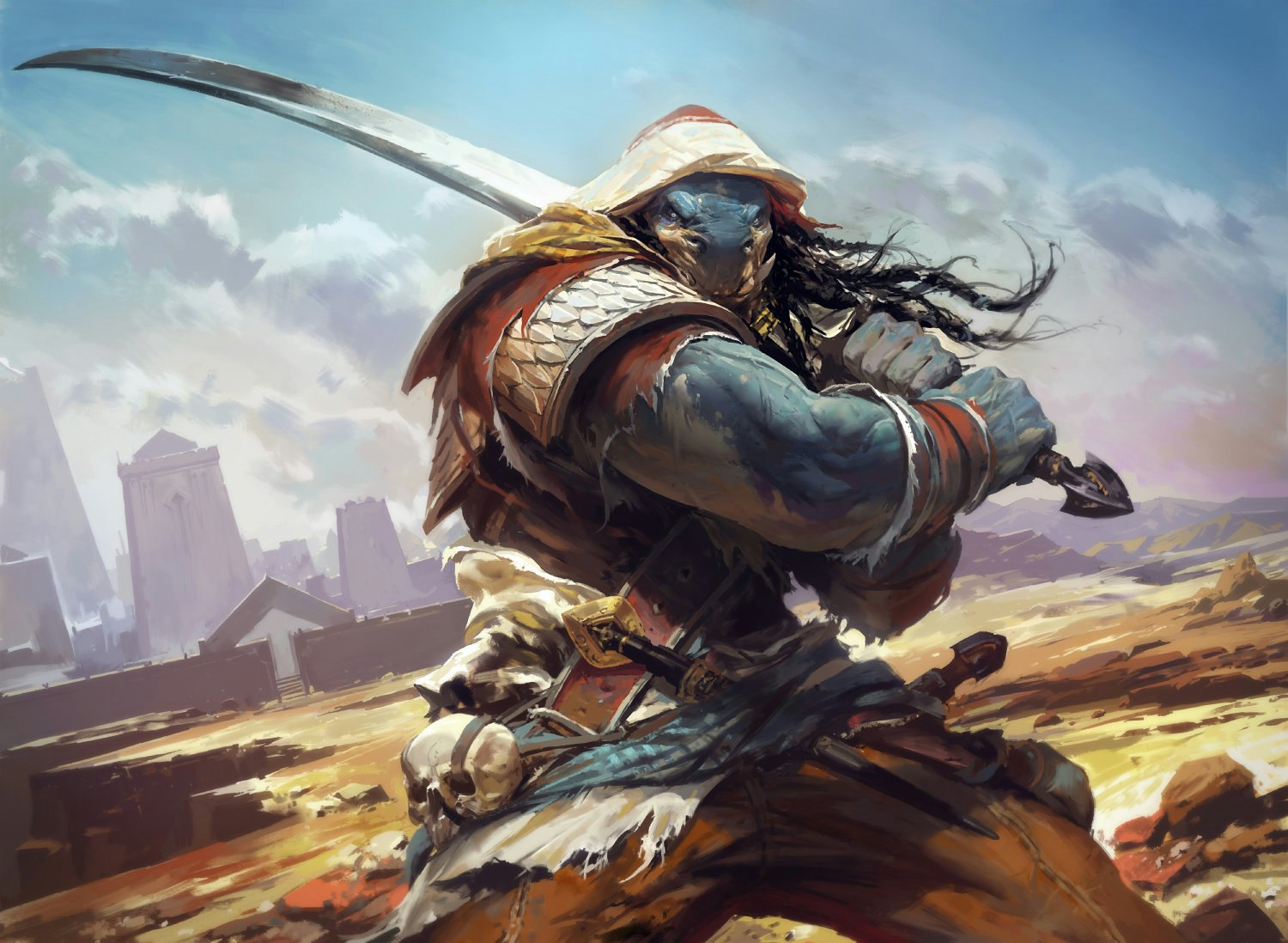
Back in 2014, Magic cards were typically released in larger blocks divided into three sets. Each set would be released on its own, giving players a chance to experience the new cards and play with them before the next set moved the experience forward. But Wizards had a problem.
“The audience was showing that they would get tired of blocks and so we were trying to be inventive,” Rosewater says.
His solution? Make a block with a big first set, a small middle set, and a big third set. The middle set would fit together with each of the larger sets, acting as a bridge between them, especially in a drafting format where players build decks on the fly and then play against each other in a mini-tournament. Drafts could combine the first and second or second and third sets, but never the first and third.
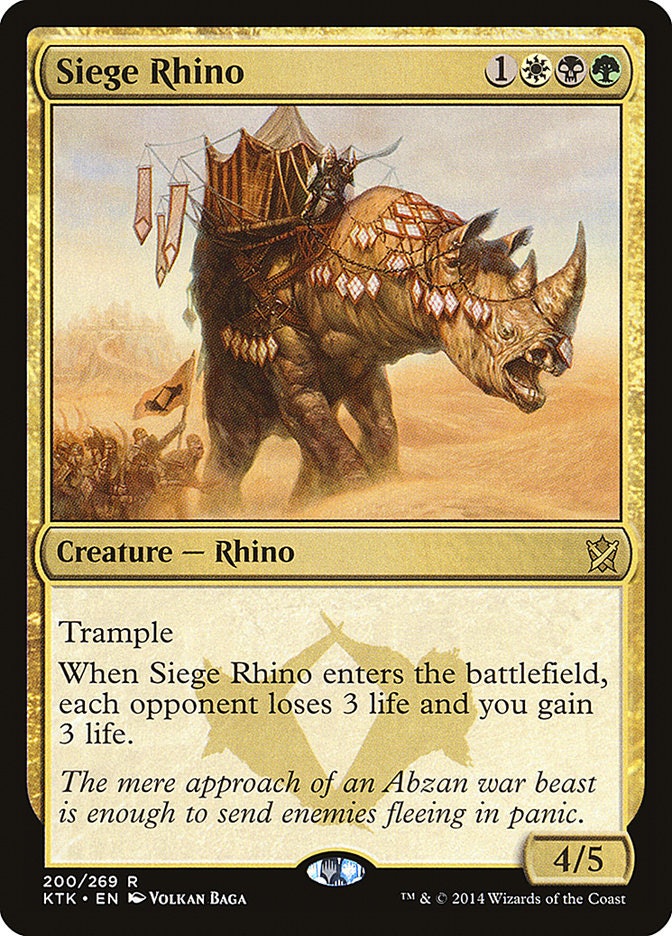
So the team had a concept, but they still needed a story that fit this new structure: two big sets, with a smaller one connecting them. The solution they came up with was time travel.
“The reason you drafted the old set with both sets is, this is the original timeline then it's the new timeline, but the opposite of the two timelines don't intersect with each other,” Rosewater says.
Khans of Tarkir takes place in a war-torn world where five clans (defined by the five wedges) vie for power. Tarkir is also notably a world that was once home to dragons who’ve since gone extinct. Then, in the second set of the block, Fate Reforged, one character goes back in time and changes the future, allowing dragons to thrive. This leads to the final set in the block: Dragons of Tarkir, where we return to a present now full of flying, fire-breathing beasts.
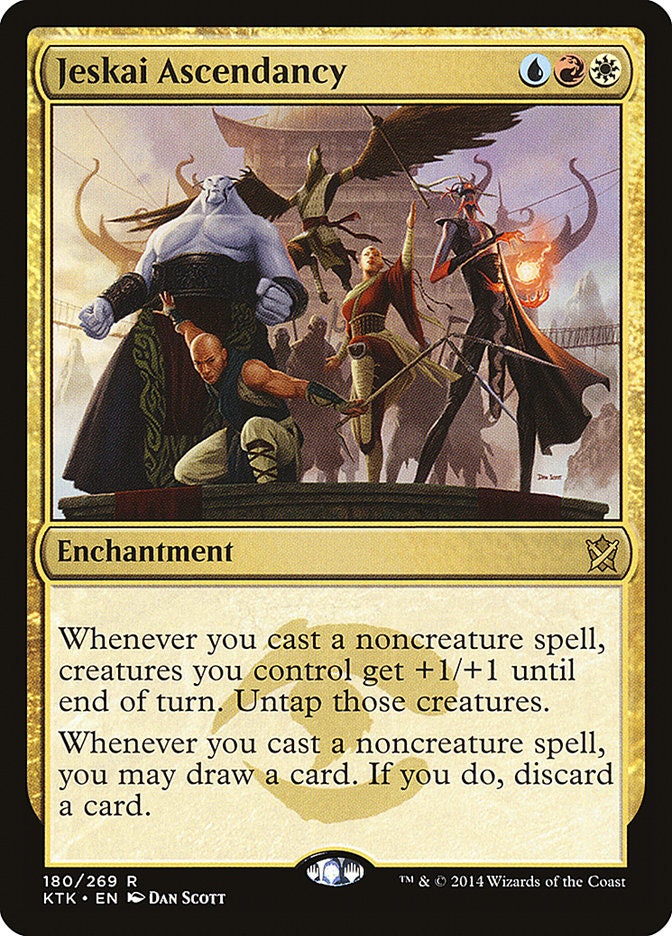
The next step was to create the world of Tarkir, but even at this point, wedges weren’t the focus. The team originally came up with four clans, each inspired by one attribute (and body part) of a dragon.
“So it was like the wings of the dragon, the talons of the dragons,” Rosewater says. “And it was playing up different aspects: speed or ferocity and stuff like that.”
“OK, this seems like the low-hanging fruit.”
However, at some point in this process, they decided to add a fifth clan. This upended the original plans and forced Wizards to finally give in to the fans who were clamoring for wedges.
“OK, this seems like the low-hanging fruit,” Rosewater recalls saying at the time. “Let's do this.”
The rest is Magic: The Gathering history. The terms for wedges introduced in Tarkir are still used today, and most of the five legendary creatures designed to lead those five wedges/clans still see regular use. One of them, Narset, even became a Plansewalker (the highest honor any Magic creature can achieve).
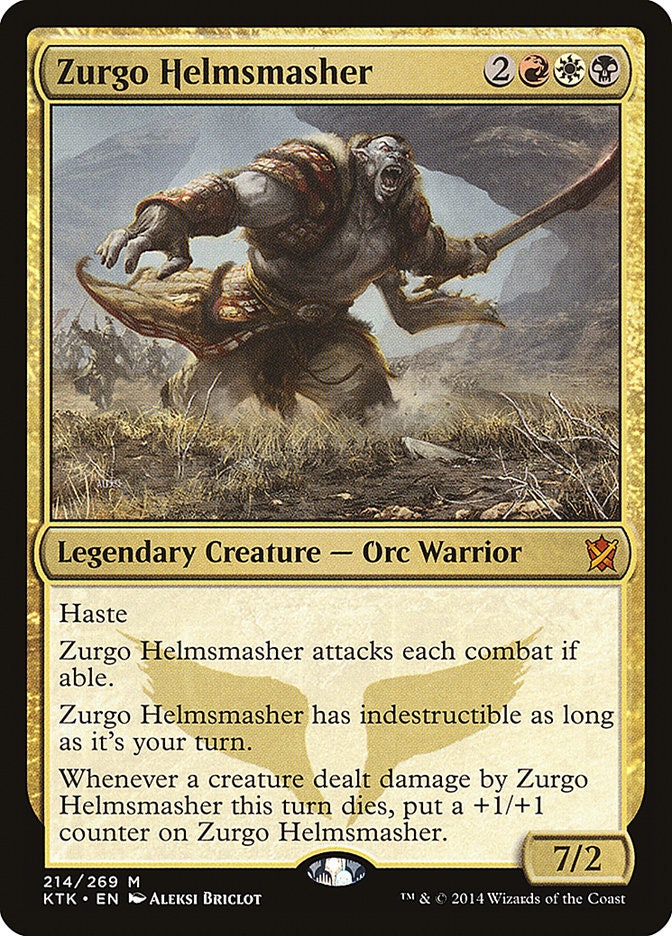
“It was a pretty special set for us,” David Humpherys, who worked in development on Khans of Tarkir, tells Inverse. “It was one of our most popular draft formats. It was probably one of our better-received blocks on the whole.”
However, there was one catch. When the block finally did introduce dragons in its third set, the reaction wasn’t as positive as Wizards had hoped. Some say it’s because the company had just featured dragons in a previous set, while others argue that the dragon-less world Khans of Tarkir introduced in the first set was so successful it became a hard act to follow. It’s also worth noting that Dragons ditched the wedges for simpler color combinations.
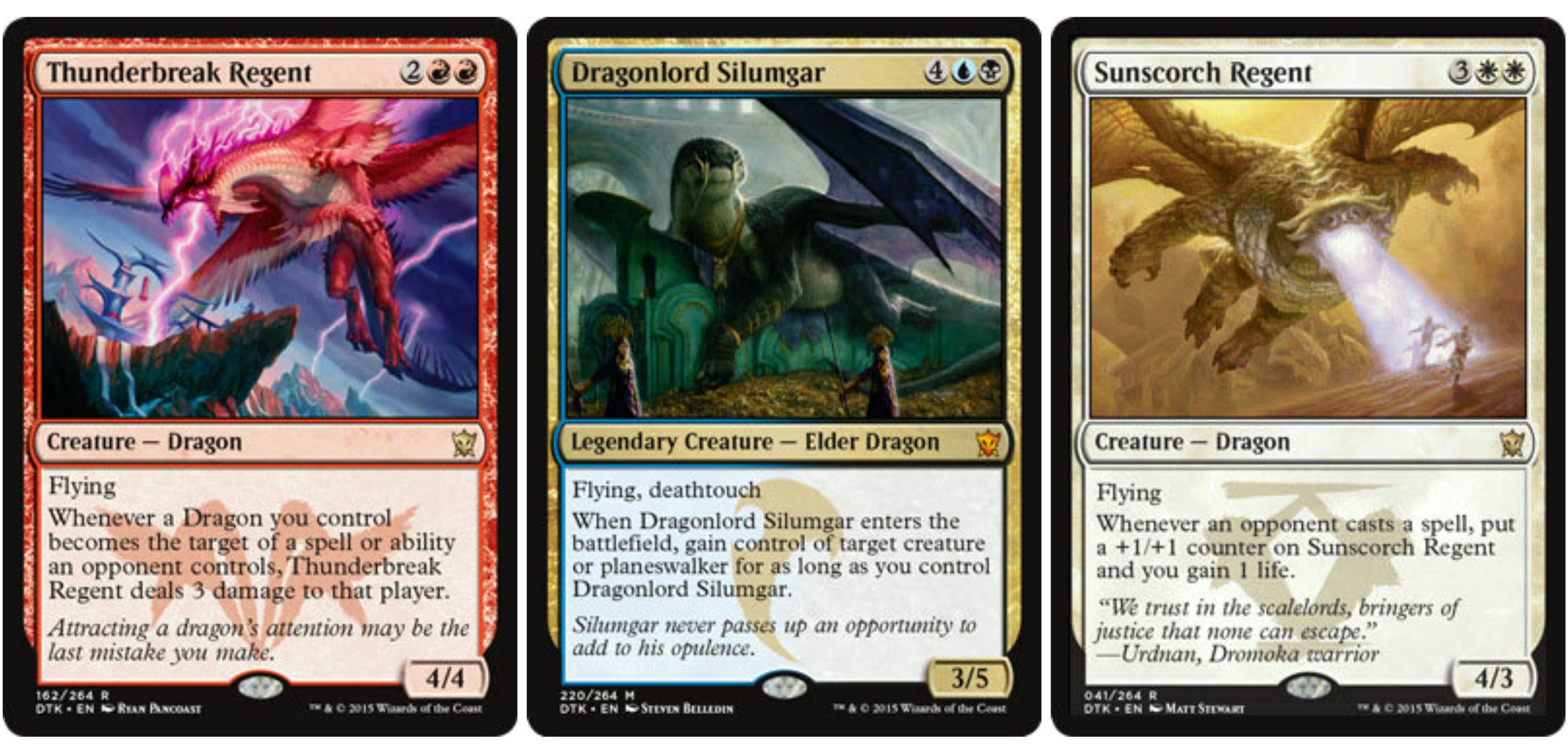
For Humpherys, the problem may have more to do with the very nature of dragons themselves.
“What makes dragons special is that there are only so many of them,” he says.
“You can’t really play a one-mana dragon.”
Creating a world full of dragons made them less special by default, but at the same time, Wizards wasn’t willing to go so far as to turn dragons into yet another common creature type like rats or goblins.
“You can't really play a one-mana dragon and two-mana dragon and three-mana dragon and have a curve of dragons,” Humpherys says. “It's not delivering what people would want of dragons. What makes them special is that they're kind of rarer and cooler, and I don't even mean rare in terms of card rarity.”
Return to Tarkir
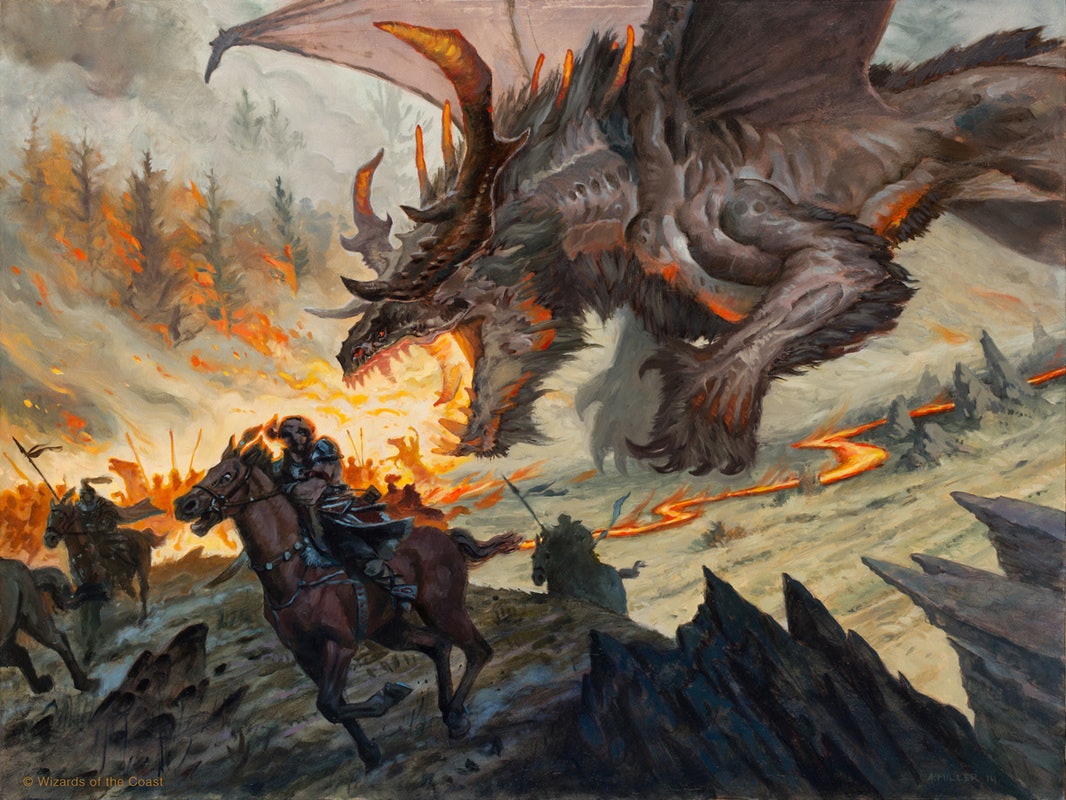
For the first time in a decade, Magic will return to Tarkir in April 2025 with a brand new set that straddles both versions of the beloved block. And yes, that includes the wedges.
“We know from original Khans that there are fans of both timelines,” Rosewater says. “And while this is the current timeline, there are many elements of the original timeline that will bleed into the new timeline. And so if there's some fear that you won't see three-color cards, I promise you'll see some wedge cards, they will exist.”
Rosewater also hints that while according to Magic canon, the current timeline for Tarkir is the dragon one, the world of warring clans that players fell in love with isn’t gone either.
“I promise it is not forever lost,” he says. “Even within the story, when we ended the story, you found that the people were starting to rediscover the clans. Part of going back is delivering all the things that people loved about the original Khans block.”
“These are some of the coolest dragons we've ever done in this setting.”
Then again, if you’re a dragon fan, you’re also in luck.
“We know the factions are popular, we know dragons are cool, these are some of the coolest dragons we've ever done in this setting,” Humpherys says.
While Return to Tarkir will just be a single set and not a three-set block like Khans of Tarkir, that’s just pushing Wizards to focus on the best possible concepts, mechanics, and cards.
“We are trying to pick the highlights of what people love most,” Rosewater says. “It is truly the best of both worlds.”







